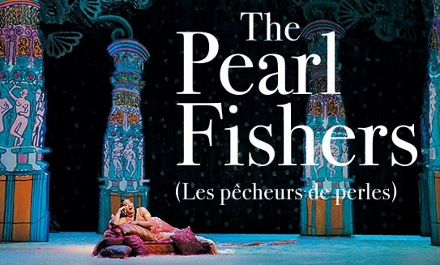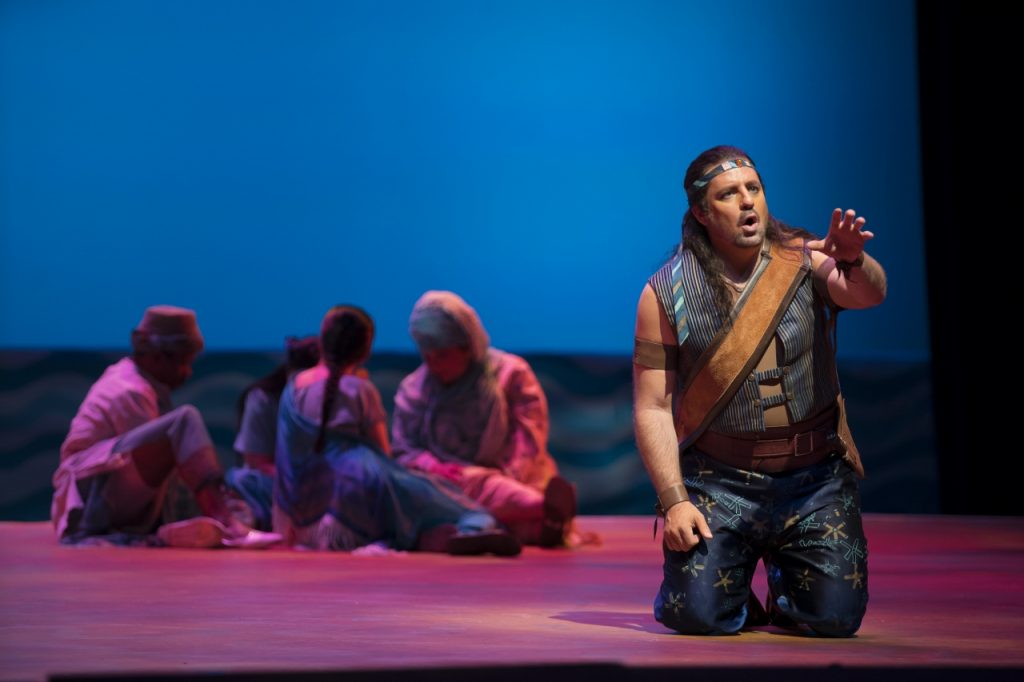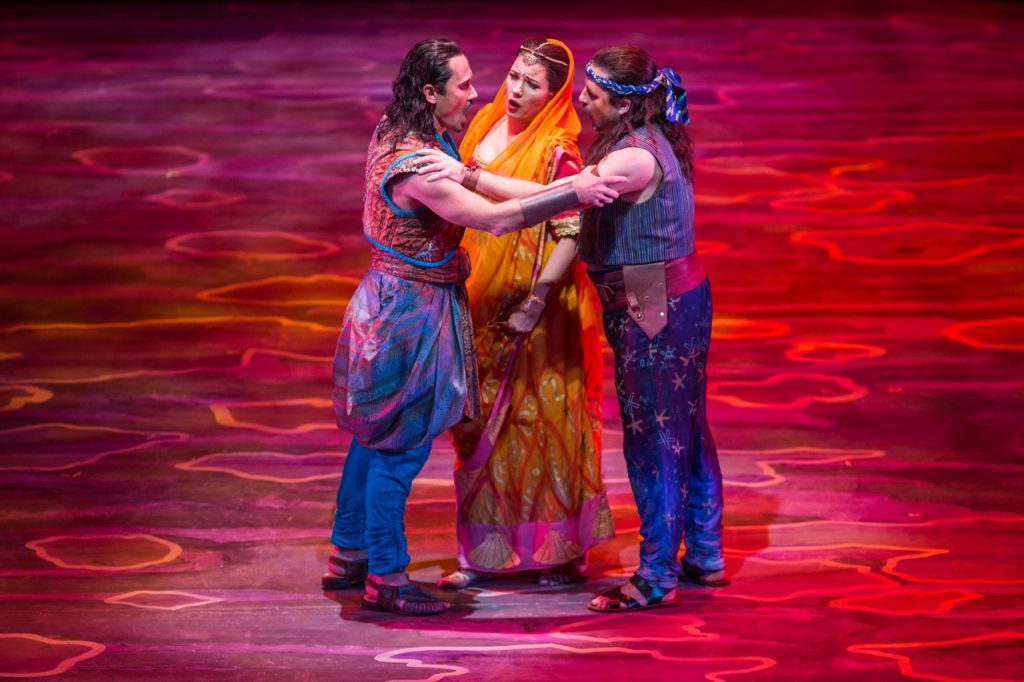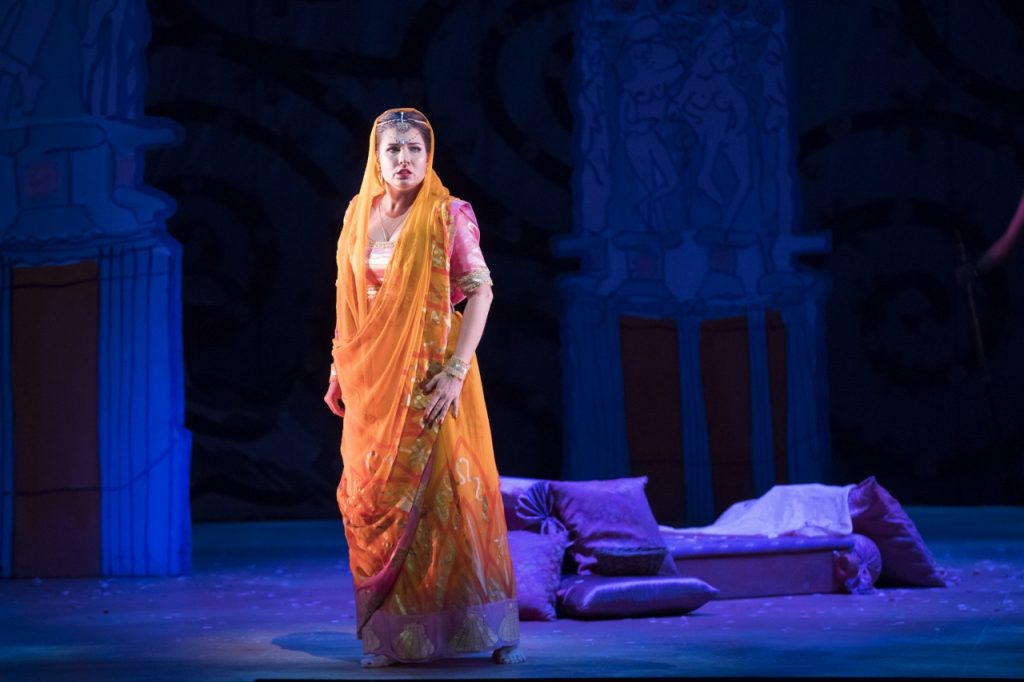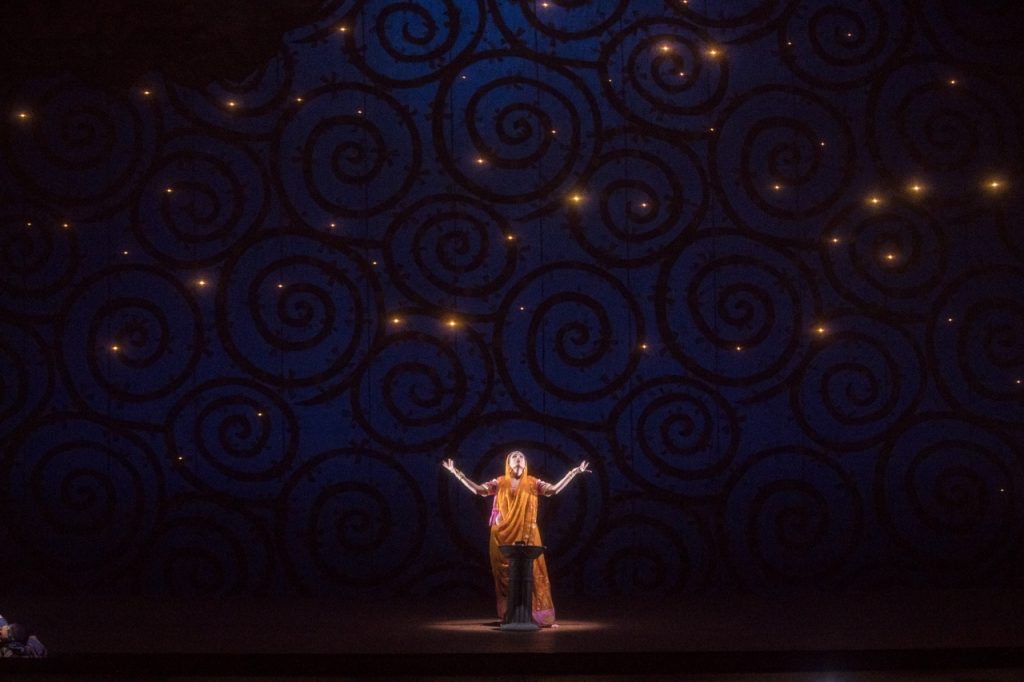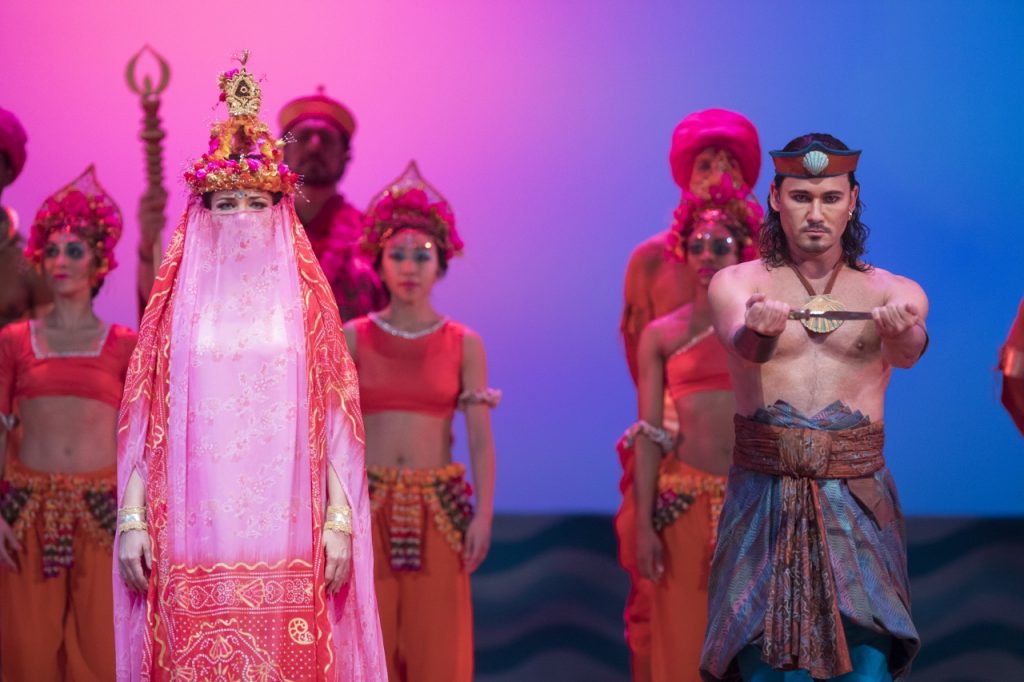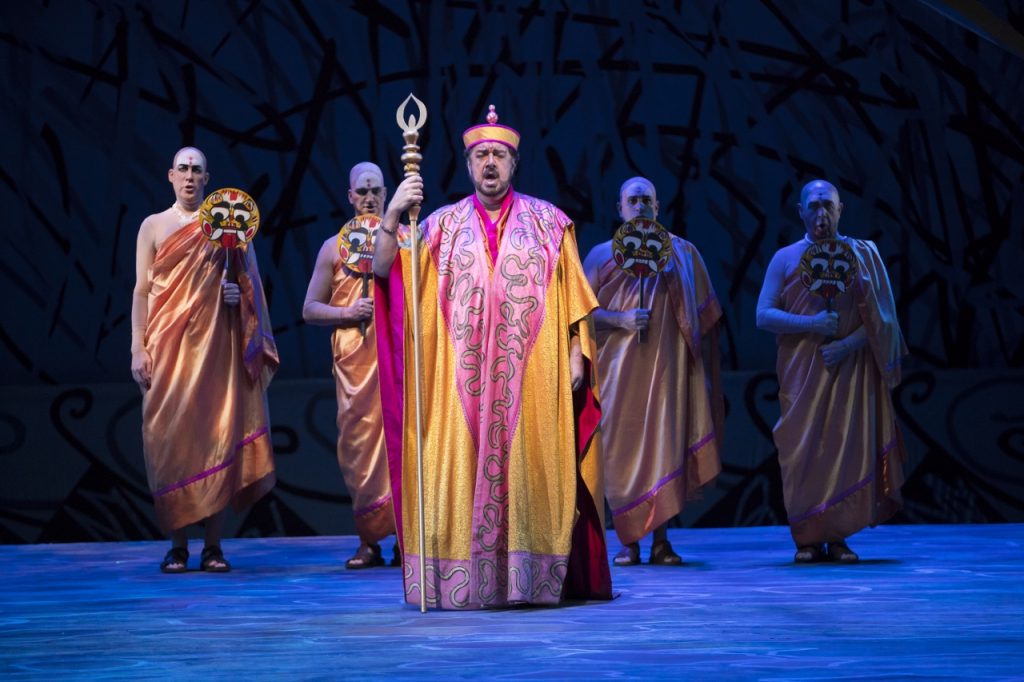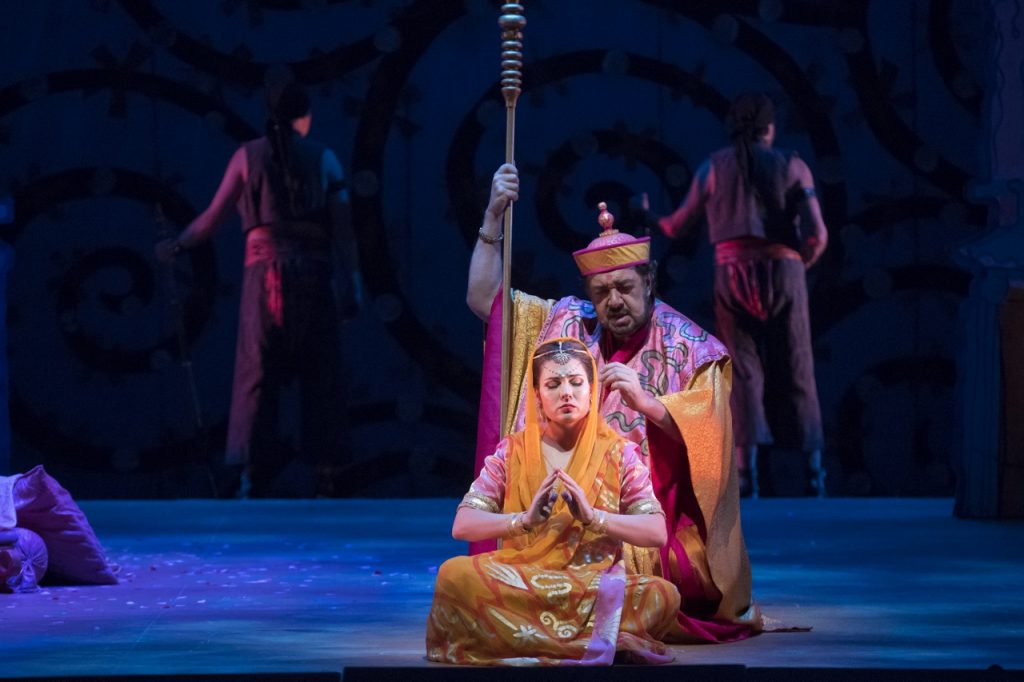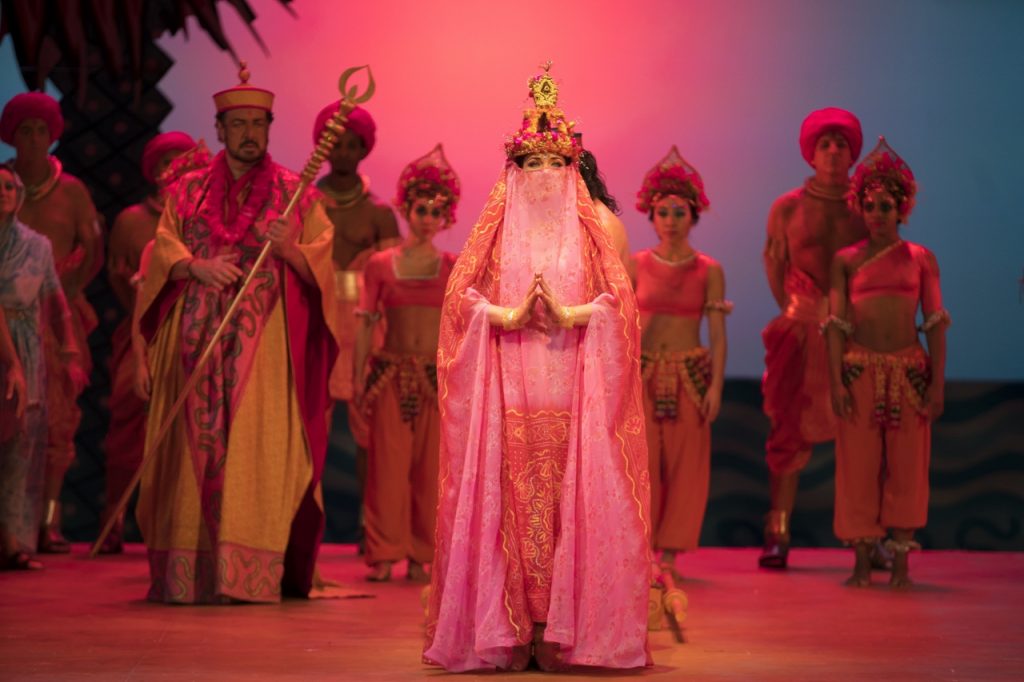DIVING INTO ESCAPIST ENTERTAINMENT
If opera is an escapist medium, transporting audiences to a distant time and place, then Bizet’s The Pearl Fishers is wonderfully paradigmatic. Set in Ceylon (modern-day Sri Lanka) at an unspecified time, though likely before the advent of Europeans in the sixteenth century, the opera exudes exoticism at every turn. In Lyric’s production, which originated at San Diego Opera back in 2004, British designer Zandra Rhodes enhances and enlivens the oriental setting with an extraordinary color palette of pale blues, turquoises, oranges, yellows, and pinks. The result is simply stunning.
As with Bizet’s beloved Carmen, which debuted a dozen years later in 1875, The Pearl Fishers contains more of the French composer’s characteristically tuneful and melodic music, including one of the most celebrated duets between a tenor and a baritone in the repertoire. While the score isn’t nearly as exuberant as Carmen, it is far more lyrical and tender. There are chant-like moments too, which accompany the Hindu rituals of the protagonists. And there are dance movements and choruses interwoven with the vocal parts of the opera’s four named characters.
The Pearl Fishers’ lacklustre libretto was written by Eugène Cormon and Michel Carré, the latter better known for his collaborations with Jules Barbier for Gounod and Offenbach. A tale of forbidden love, the story begins with the reuniting of friends Zurga and Nadir. Two backstories are vital to the plot. In one, Zurga and Nadir had sworn off their youthful love for the priestess Leïla. In the other, Leïla saved the life of Zurga. What ignites the opera’s drama is the arrival of Leïla, who is enlisted to pray for the titular pearl fishers, but commanded not to remove her veil. Only Nadir recognizes her. He approaches Leïla and declares his love for her. When the chief priest Nourabad discovers them, he brings the lovers before Zurga for execution. Discovering that Leïla is the one who had earlier saved him, Zurga sacrifices himself so that the lovers can escape.
All four named roles are filled by faces familiar to Lyric subscribers. Matthew Polenzani, seen earlier this season in Rigoletto, plays Nadir. Mariusz KwiecieÅ„, seen last year in the title role of Eugene Onegin, plays Zurga. Both men have incredible voices that blend beautifully in the duet “Au fond du temple saint.” And each becomes more enjoyable each time he graces the Lyric stage. KwiecieÅ„, in particular, is a phenomenal actor, who always inhabits his roles with aplomb. Polenzani is a touch awkward, especially in romantic scenes.
Latvian soprano Marina Rebeka charms and enchants as the silken sari-swathed Leïla. Her lithe and lissome singing captures the role’s coloratura cadenzas masterfully, spawning shivers of sheer delight in the spectator. In short, Rebeka can’t return to the Lyric soon enough. Andrea Silvestrelli not so much. As Nourabad he is a reliable performer, but one that, as usual, does not rise to the level of outstanding.
On the whole, this 13-year-old production continues to set a high bar for Bizet. Andrew Sinclair’s direction neatly captures the central conflict of the story, but his conception of the opera’s dance choreography seems misguided, aiming more for the “primitive” than the balletic. As realized by choreographer John Malashock, the result is rather absurd and awkward, detracting from an otherwise elegant production. Rhodes’ riotous designs channel the bright colors and broad brushstrokes of Matisse and Chagall in sets and costumes that remain contemporary and vibrant. Ron Vodicka’s lighting design offers the only use of blacklights this writer can remember having seen at Lyric, which is a striking choice for a pre-modern setting.
photos by Todd Rosenberg and Andrew Cioffi
The Pearl Fishers (Les Pêcheurs de Perles)
Lyric Opera of Chicago
Civic Opera House, 20 N. Wacker Drive
ends on December 10, 2017
for tickets, call 312.827.5600 or visit Lyric Opera
for more shows, visit Theatre in Chicago
